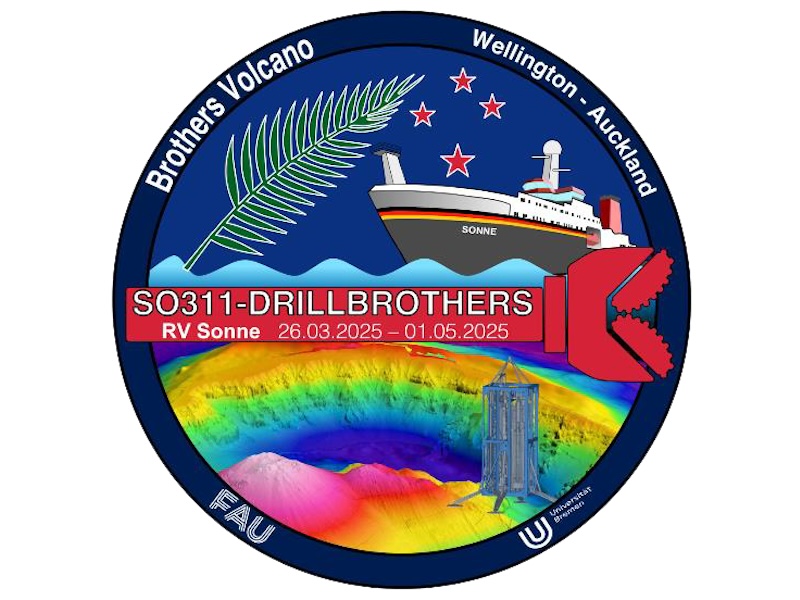On the trail of metals in volcanic hydrothermal vents
The DRILL-BROTHERS research project is investigating the complex magmatic, hydrothermal and microbiological processes of the submarine Brothers volcano in the southern Kermadec island arc

A team from Germany, New Zealand and Canada set off today on an expedition north of New Zealand on board the German research vessel FS SONNE. Until 1 May, 34 researchers and technicians under the scientific leadership of Prof. Dr Wolfgang Bach, MARUM â Center for Marine Environmental Sciences and Department of Geosciences at the University of Bremen, will investigate the hydrothermal processes in an active submarine island arc volcano. More specifically, they will carry out scientific drilling at the Brothers volcano in the southern Kermadec arc.
This area is of particular interest because two types of hydrothermal systems occur there: There are acidic âwhite smokersâ at the Upper Cone, while classic âblack smokersâ can be found at the north-western edge of the caldera. This makes it possible to investigate the role of magmatic degassing flows and the circulation of heated seawater in the transport of metals to the sea floor. This is because research into hydrothermal sources has not sufficiently clarified whether metals are primarily leached from the rock by circulating seawater or whether significant proportions of the metals are due to the escape of magmatic fluids.
Also on board is the MARUM-MeBo200 ocean floor drill rig, which can be used to extract drill cores from up to two hundred meters depth below the ocean floor. The mobile seabed drill rig is intended to extract drill cores from the less-explored sub-seafloor layers. Deep research drilling was already carried out in the same area of the volcanic caldera in 2018 as part of the International Ocean Drilling Program (IODP) during Expedition 376, but coring of the uppermost basement had been scarce. The current research trip is intended to expand the sampling in the upper areas of the subsurface.
In addition, the diversity and distribution of microbial life will be analyzed using the cores obtained. The Brothers volcano harbors unique microbial ecosystems that thrive in acidic fluids and transfer carbon dioxide into biomass. The researchers on board will carry out cultivation experiments as well as analyses of the genome, biomarkers and important lipid molecules. A TV-guided grab and a CTD probe will also be used.

